Thread #Haldwani case:
After extreme rainfall in #Uttarakhand, a bridge failed across Gaula river near Haldwani
Rain wasn't sole cause, it just brought d collapse a bit earlier
Himalayan rivers exit mountains & enter plains with great intensity & it is a critical zone
After extreme rainfall in #Uttarakhand, a bridge failed across Gaula river near Haldwani
Rain wasn't sole cause, it just brought d collapse a bit earlier
Himalayan rivers exit mountains & enter plains with great intensity & it is a critical zone

It is in this critical section is Haldwani where the Gaula river exits the himalayas and enters plains. Rivers bring huge amount of sediments with them to settle as well as they have high intensity flows during monsoon to erode
Visual shows the location of the bridge that failed
Visual shows the location of the bridge that failed
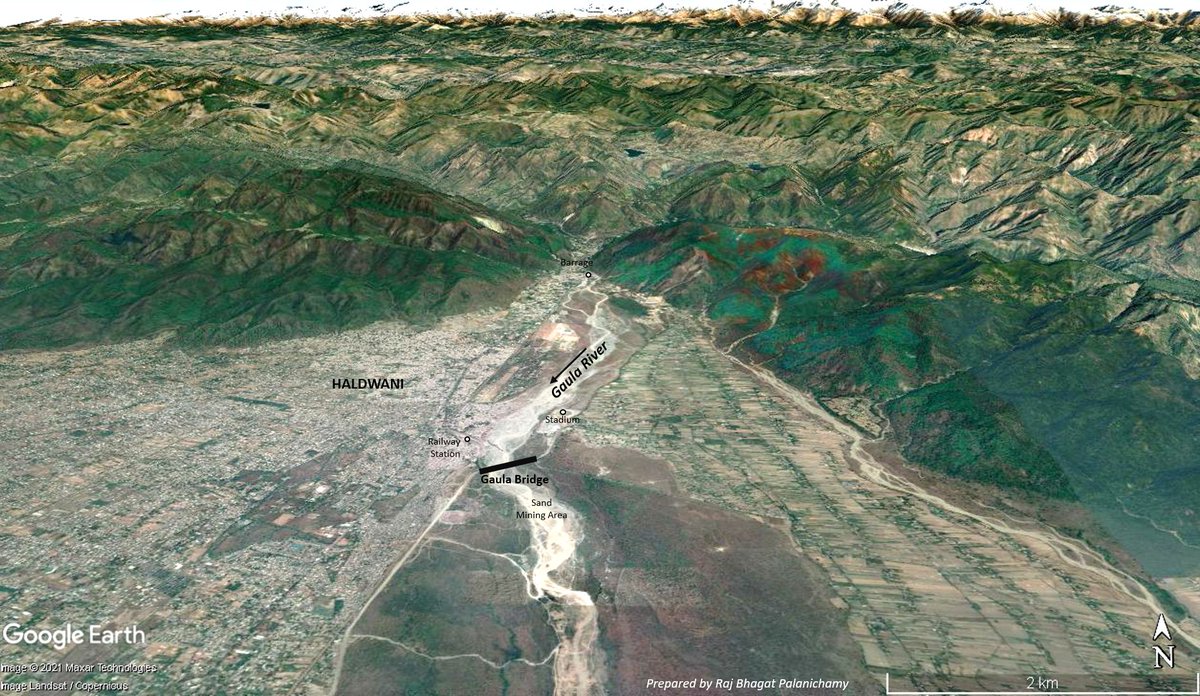
Failure of a bridge is nothing new in the region. The previous bridge across the Gaula river (shown with old satellite image below) had collapsed in 2008 after floods 

A new one which was meant to be a stronger one was constructed and by 2011 it was open for traffic. Satellite image shows the bridge under construction 
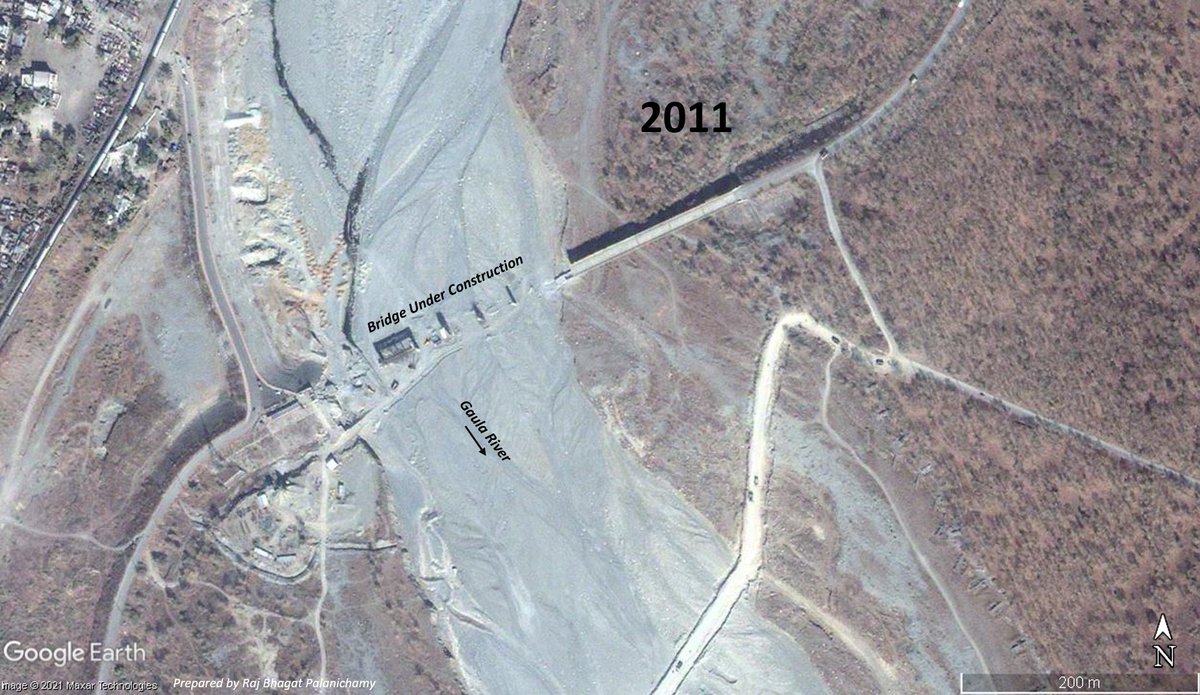
The bridge designers didnt anticipate a lot of things. There were other activities that were going on as well. Just 500 meters downstream of bridge, intense sand mining activity was happening which resulted in deepening of river bed. All those looking like ants are lorries! 

As downstream river bed deepened, the river bed upstream closer to the bridge was also deepening along with it as water began flowing. This deepening of the river bed began undermining the bridge structure 
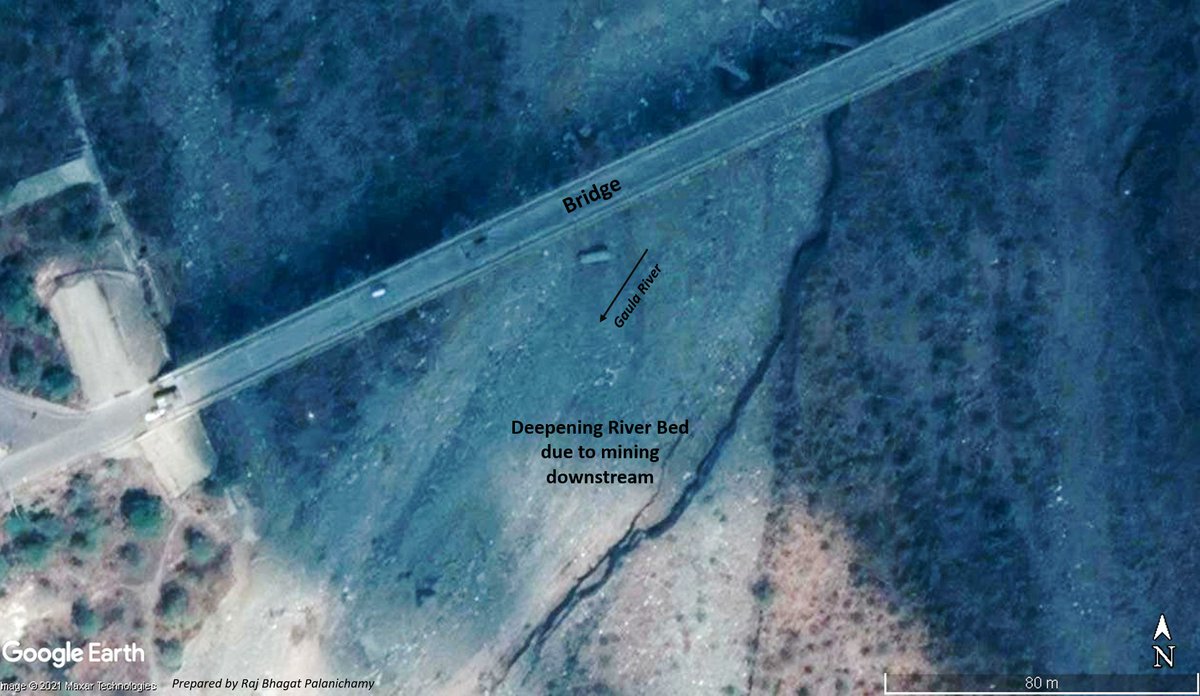
In 2011, there was erosion in the upstream of the bridge as well close to the railway line. This is just 500m above the bridge. 

In order to protect the bank, protection measures were taken up and the river began moving slightly to the east because of these. 
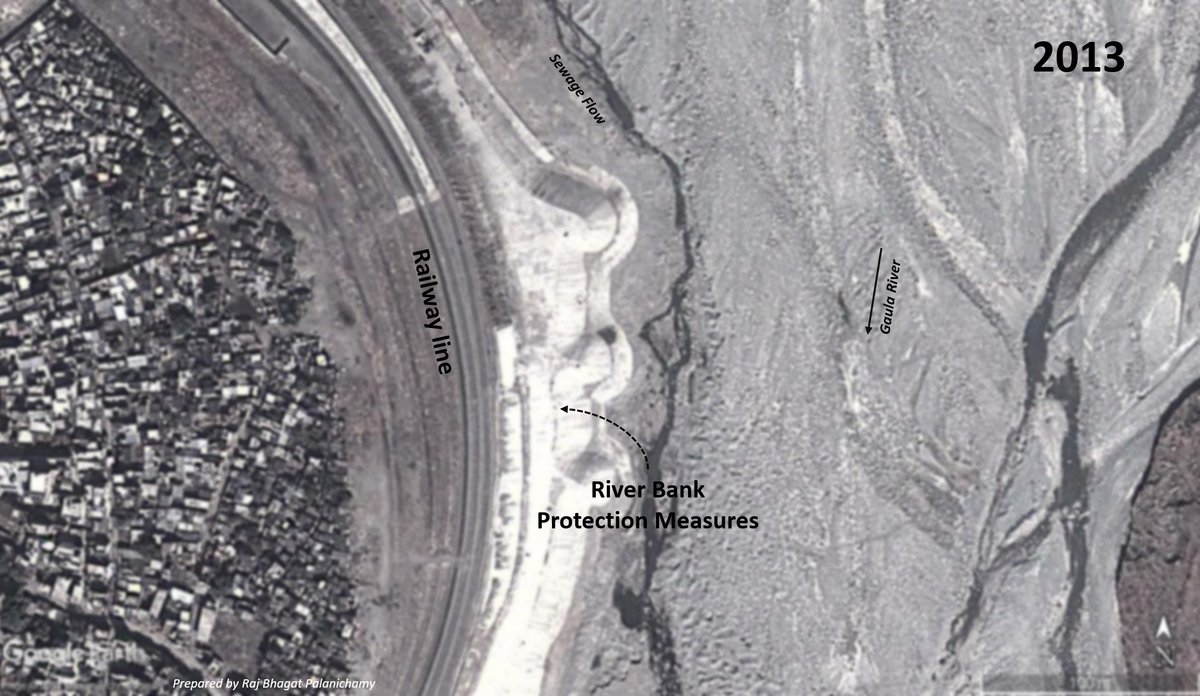
And on the other side of the river, a massive stadium and sports complex was built on the flood plain. The buffer that the river had with respect to carrying flood water was becoming limited 

More over to protect the banks, wing dikes were constructed along the river banks. This prevented the river to move to the west as well.
With both sides of the river "protected", the river now had no place to move and it became narrower with smaller flood buffer
With both sides of the river "protected", the river now had no place to move and it became narrower with smaller flood buffer
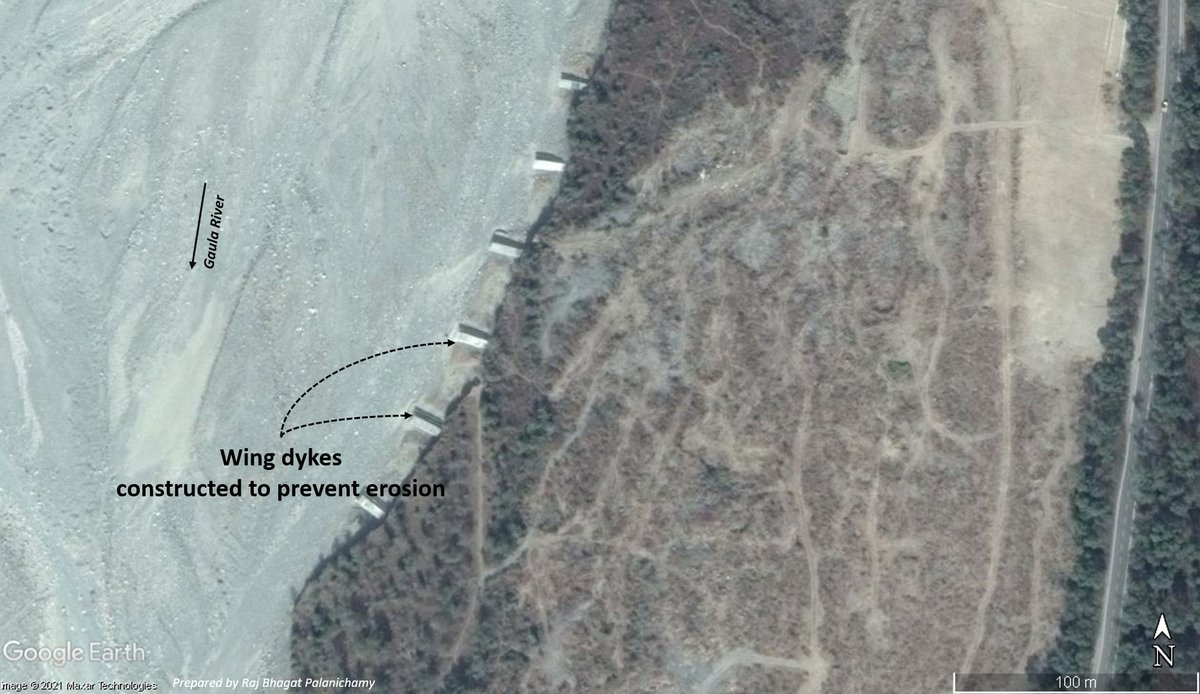
So the river became narrow upstream intensifying flow towards the bridge, the river bed deepened due to activities downstream, the river meander was also closer to the haldwani side of the bridge which started eroding. These began exposing the bridge structure 

This video shot by Prakash provided by @Indian_Rivers shows the condition of the bridge a month before the collapse. The bridge was just waiting for demise.
And after heavy rainfall last week in uttarakhand, water levels rose and the bridge failed exactly on the haldwani side where the erosion and exposure was happening. Video Credits: @Indian_Rivers
There are many such infrastructure in such critical areas that are waiting to fail. I am not going to say what should be done but one can think in two lines
1. Responsible development
2. Financial costs (how long & how many times are tax payers going to fund such doomed projects)
1. Responsible development
2. Financial costs (how long & how many times are tax payers going to fund such doomed projects)
The event is not sudden and as mentioned earlier was waiting to happen. @Indian_Rivers had talked about this location long time ago. Check their handle!
@threadreaderapp unroll
• • •
Missing some Tweet in this thread? You can try to
force a refresh





















